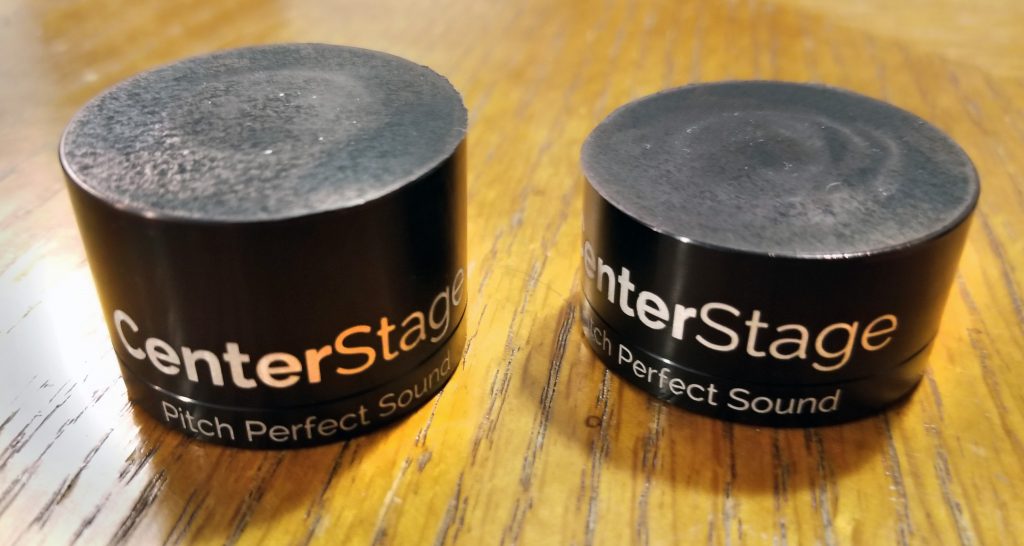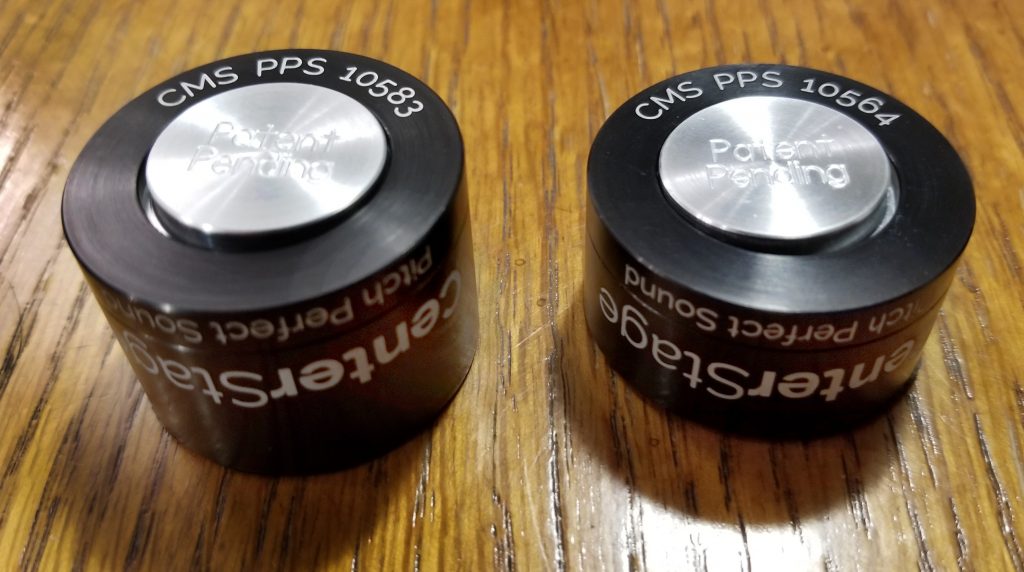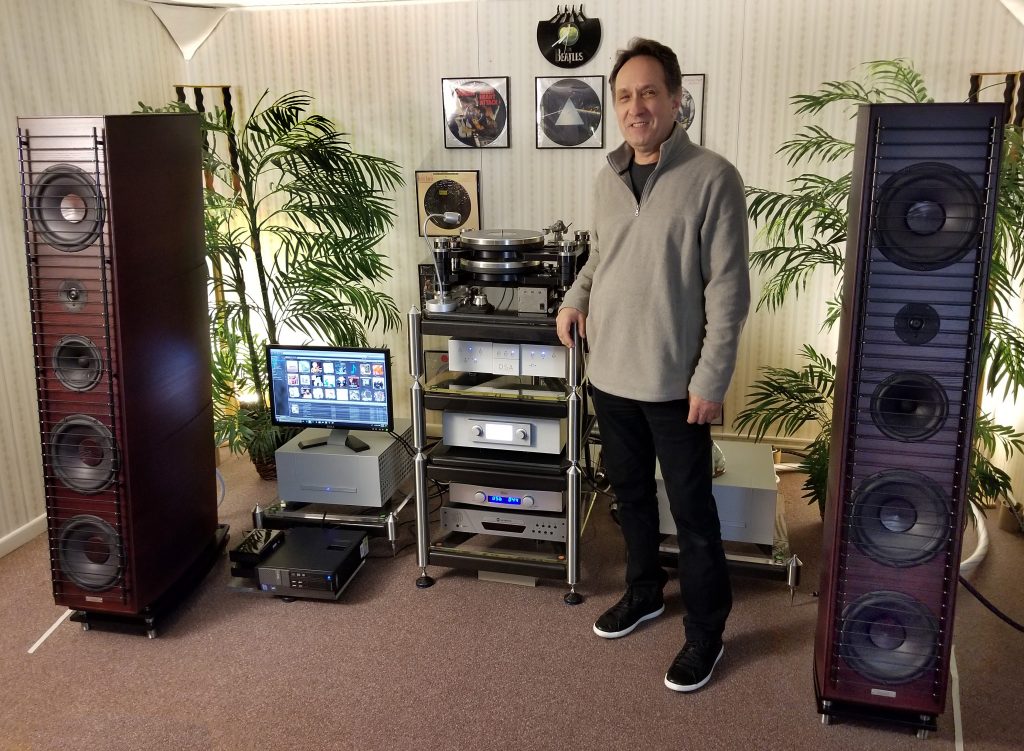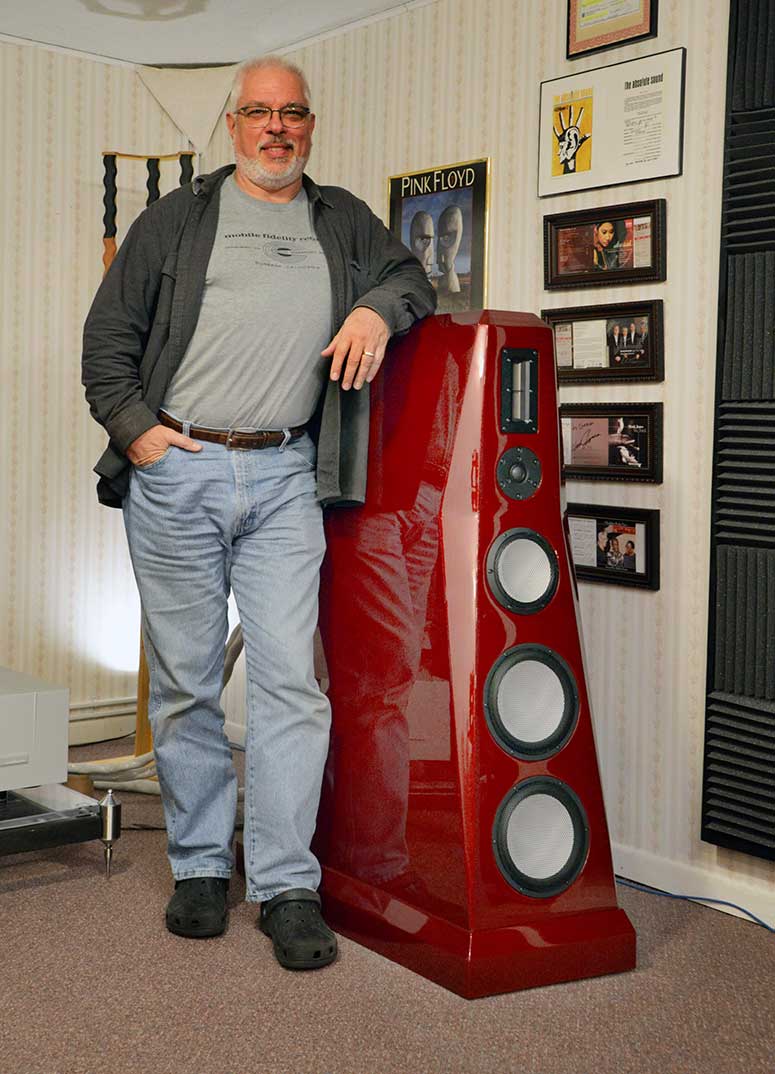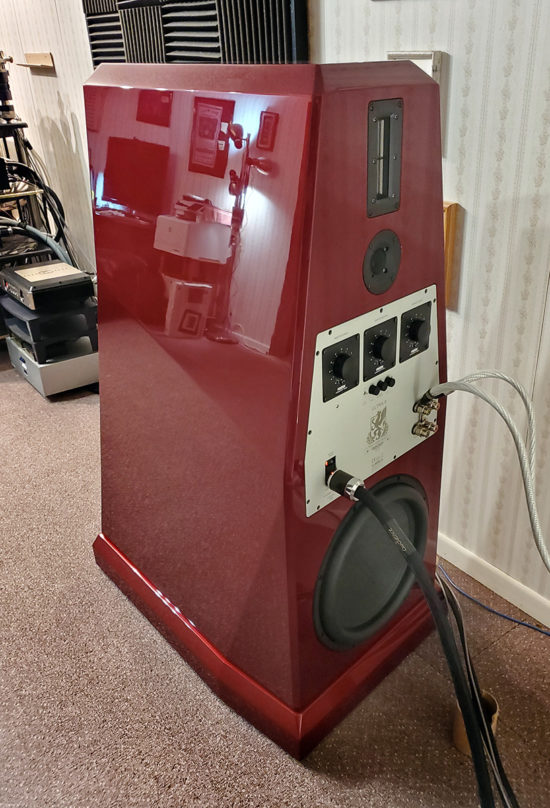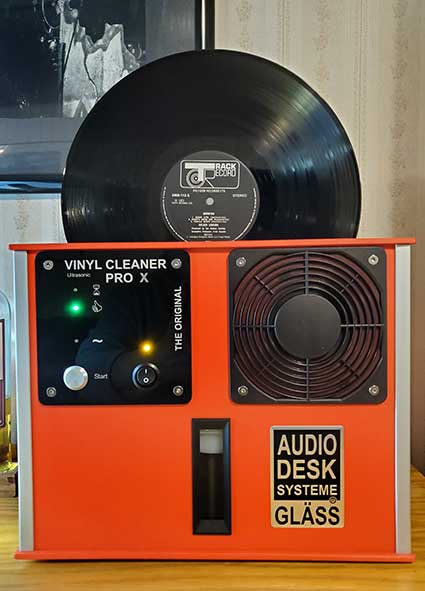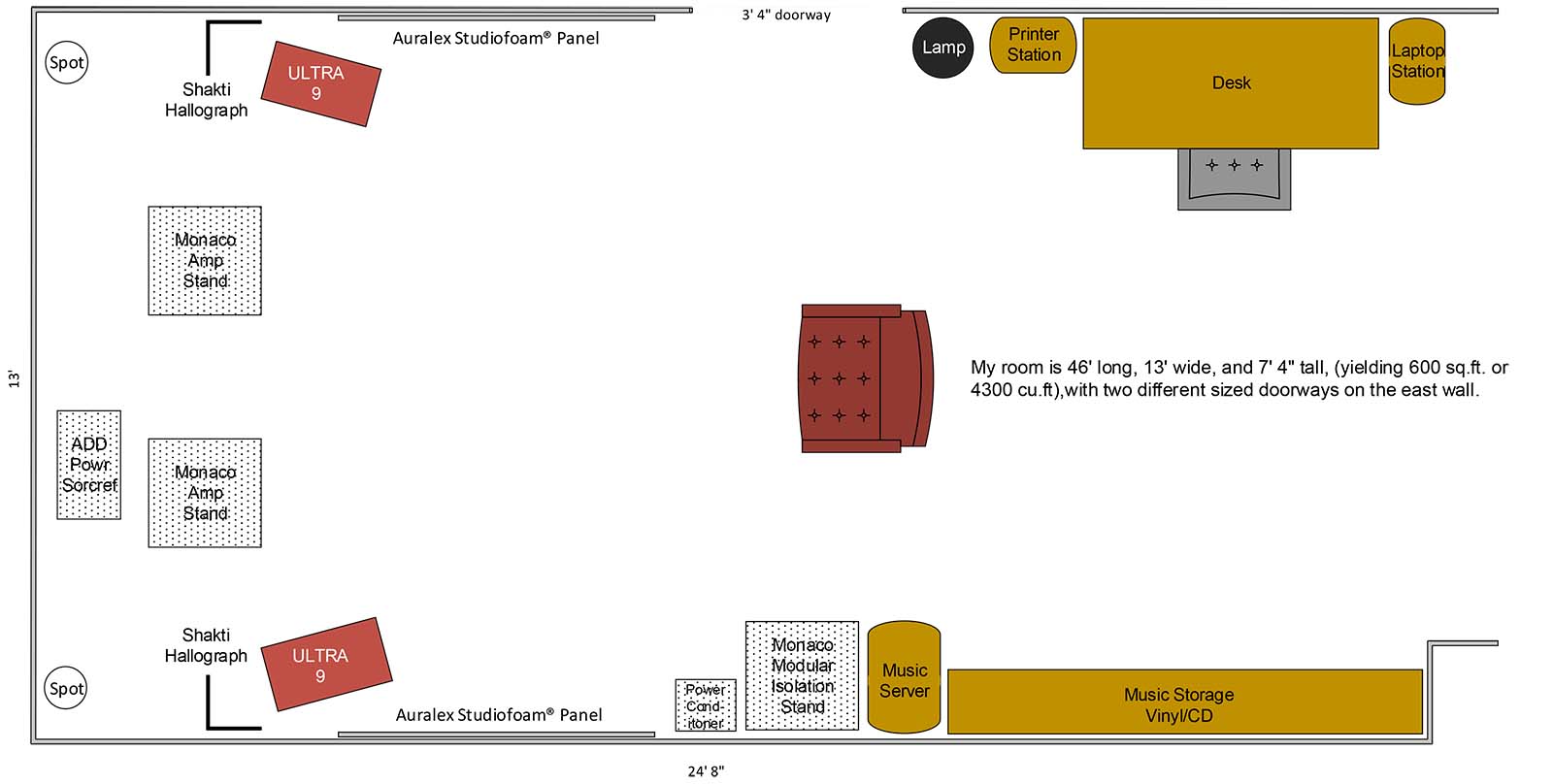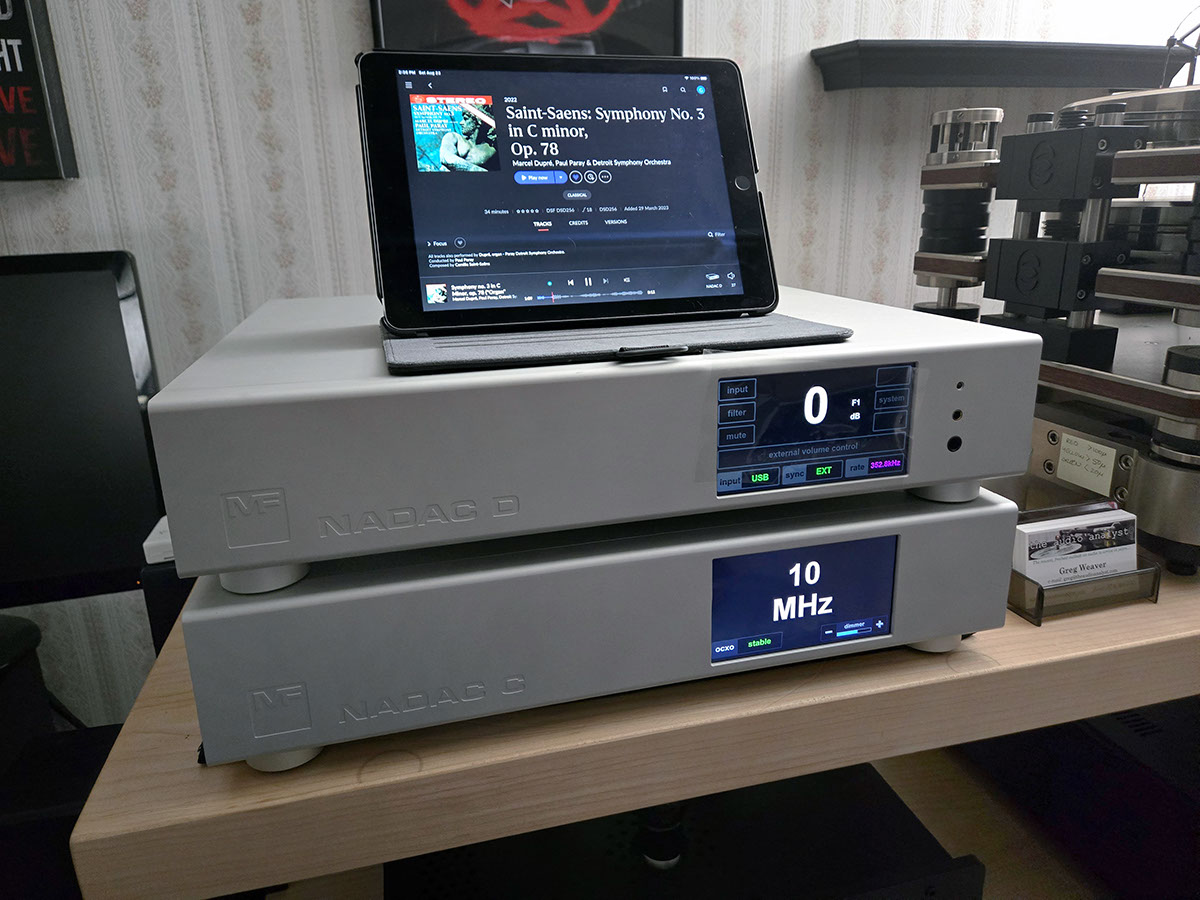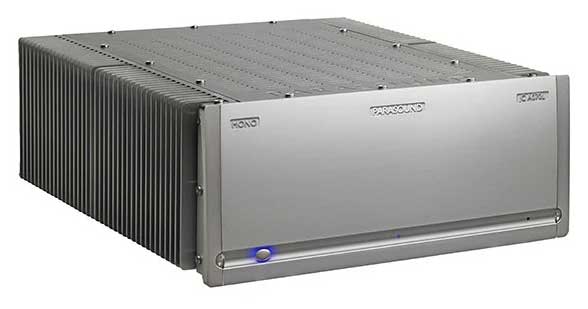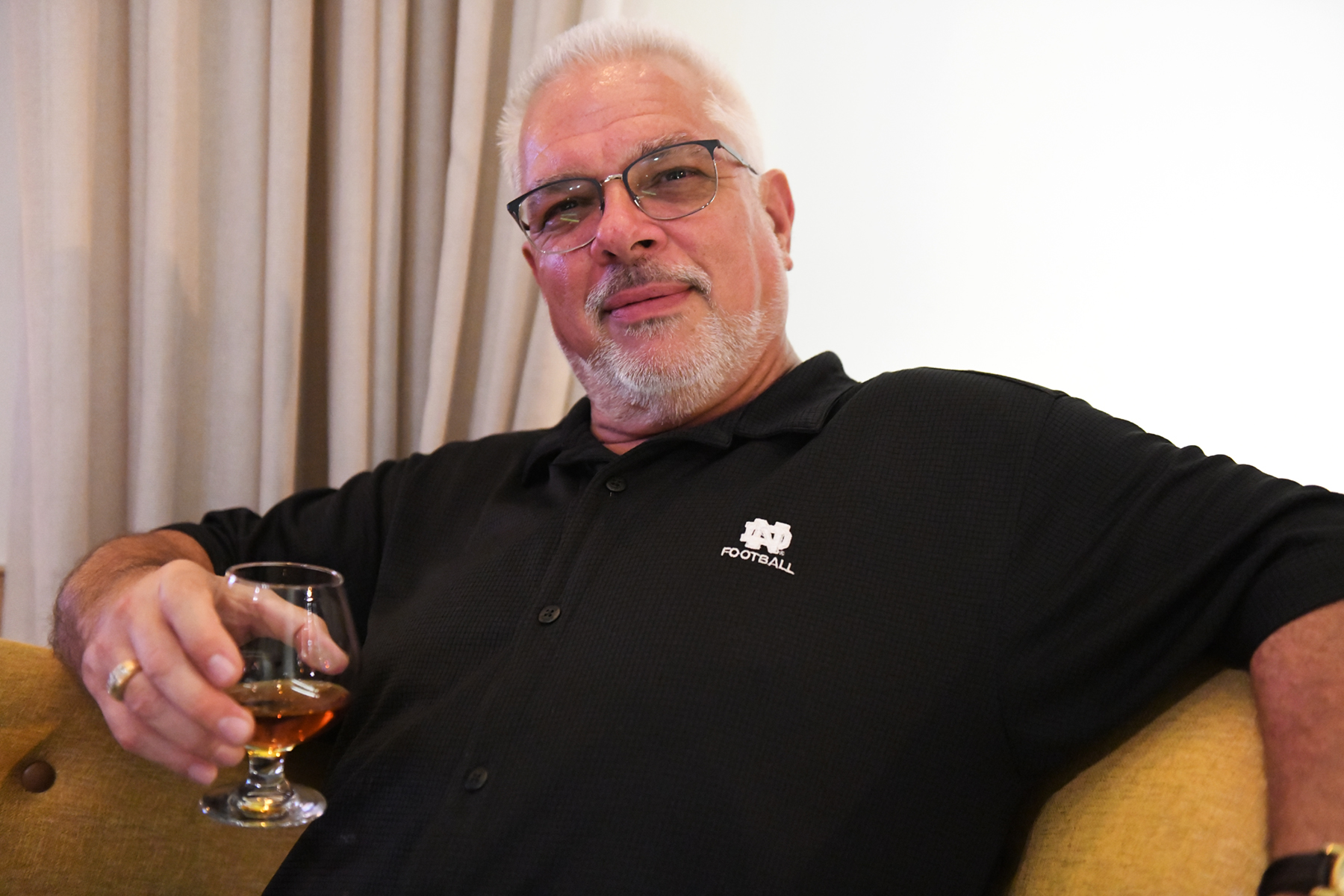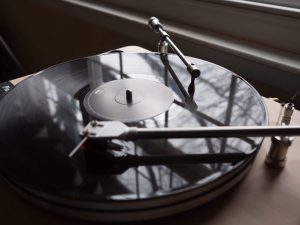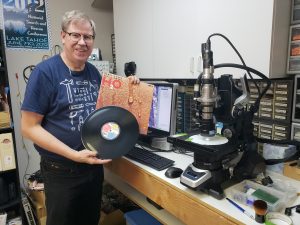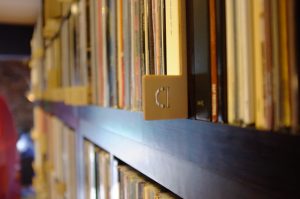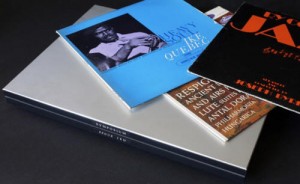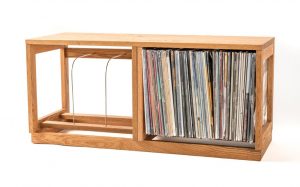The game-changing Critical Mass Systems Center Stage footers, one 25mm, and one 20mm, tall
I've been using and experimenting with footers since their very genesis back in the summer of 1983, which saw the introduction of both the Sorbothane™ footed Mission Isoplat and Steve McCormack's machined aluminum ModSquad TipToes, but the Critical Mass Systems Center Stage is something altogether unique.
There can be no doubt that all such devices make a difference. But that difference can be, well, less than desirable in many cases. The best ones clearly afford a dramatic unveiling and let you more clearly hear things like the silence between notes, microdynamic rendering, and spatial cues. They can remove or help nullify external influences which must be viewed as a disordered and chaotic force that, if left unaddressed, will manifestly pollute and contaminate the purity and clarity of your system's true voice. However, the less effective footers merely shift resonance to differing frequency bands, or even worse, amplify them, and, while they will clearly sound "different," they only serve to compound the musical chaos and confuse the sonic landscape and tempo with their own murkiness and sullied contributions.
With that all in mind, it was with piqued curiosity that I read the Center Stage Footer Whitepaper when their creator, Joe Lavrencik, the principal of Critical Mass Systems, first reached out to me on this matter. I'll leave it to you to review that paper, which is more an outline of the approach used than a true Whitepaper, should you care to, and will necessarily summarize that content here only briefly.
Essentially the problem that the Center Stage, and ostensibly, all such footers attempt to address, is the minimization of the effects vibration inflict upon a system of components, introduced to the system from the transducer motion of the loudspeakers, as well as from any other external sources (footfalls, nearby passing traffic, air handlers like your whole-home AC or heat system, etc.). This undesirable energy infiltrates any object in the room, most importantly, our audio components, as vibration. Joe's contention is that all the components in your audio system are constantly vibrating when music is playing, and as such, will eventually establish a relatively "constant" state of necessarily unnaturally "higher" equilibrium. This elevated state of equilibrium is what invisibly and consistently degrades the performance of our components.
With the Center Stage Footer, Joe proudly states that it is the most effective product he has developed to date, and that it represents the culmination of everything he has learned about abrogating that artificially elevated, inauthentic, and injurious state of equilibrium over his 17 years studying and focusing on this field. As such, it represents the result of considerable time and experimentation in honing the disciplined application of material science to solve vibration problems that are specific to high end audio. With the selection of the right materials, applied in the correct sequence, proportion, and with the addition of the correct amount and type of damping, in exactly the right locations, Center Stage is said to be a catalyst in a complex energy reaction that occurs between your equipment and its environment. Essentially, it intercedes to stabilize the otherwise prevailing unnaturally high state of equilibrium in that energy reaction to permanently sustain it at a reduced or damped state.
The Center Stage base, revealing the serial numbers
Before physically starting this project, Joe wanted to point out that there was a downside to their installation. He cautioned that due to the way they work, the disruptions they would bring to the system when initially inserted might make the system sound, well, not good! In fact, he suggested that it might be almost "unlistenable" at times. He warned me that, over the space of something like 10 days, the system equilibrium would be affected and that there would be clear, and rather dramatic, audible shifts in the sonic attributes of my system for up to as long as two weeks. With that caveat firmly established, and accepted, we decided to move forward.
When pushed to be more clear on both the reasons for an initial degradation in performance, as well as to why they would take so long to come into their own, this is how he replied. "I hesitate to get too far into the weeds, but I would offer that the reason the feet take so long to settle in with a component is related to the 2nd Law of Thermodynamics. The principle is cross-border entropic transfer in reversible thermodynamic systems. Broadly speaking this principle recognizes that electromechanical systems experience internal disorder at the moment they are engaged (turned on). The commonly recognizable sign of entropy is the generation of heat, but there are others.
Dynamic systems can be reversible or irreversible. Human beings, for example, are irreversible biodynamic systems where entropy is retained and equilibrium is ALWAYS reached. As we age, strange things happen at an accelerating pace. Our vision degrades. We might lose hair. Our joints sustain damage through wear and tear. Our muscles weaken. Eventually disease may set in and, after a time, the system shuts down completely. Even then bio-dynamic systems have residual energy. The energy is exhausted when the components of the system turn to dust. The 2nd Law implies that this is perfectly normal. Entropy accelerates in dynamic systems unless some portion of it can be transferred into another system.
On the other hand, electromechanical systems are reversible. With respect to audio components, a portion of naturally occurring and environmentally induced internal entropic disorder can be transferred into another system. Assuming that an external system (Center Stage, in this case) is specifically designed to facilitate the transfer and the external system is appropriately positioned to facilitate the transfer process, time is required to set the pathway and create a new electromechanical equilibrium point. Once settled in, Center Stage acts like a trash can that takes the "garbage" out to the curb when your system is playing music. There is also a 1st Law component to Center Stage with respect to mitigating noise as vibration moves upward through it (just like your very good Grand Prix racks), but it's the degree to which they help reduce disorder in the system above them that makes them unique."
Joe arrived on a Saturday evening and installed 30 Center Stage footers into my existing reference system, with 4 each under my linestage, phonostage, DAC, optical disc player, and both mono amplifiers, and 3 each under the two external Hard Drives storing my digital music files, as their footprint was too small to accommodate 4, which Joe has found to deliver the optimum in performance.
At the time they were installed, the system was comprised of my Kronos Sparta turntable, Helena tonearm, and the Air Tight PC-1 MC cartridge, feeding my DSA Phono II phono stage. Digital was rendered by either my own Windows 10 based PC, with JRiver 23 (64-bit), Fidelizer v8.1, or my extensively modified McCormack UDP-1, both handing off to my Hegel HD30 DAC. The linestage was the Constellation Inspiration 1.0, and I was using a pair of Constellation 1.0 stereo amplifiers in a vertical biamp configuration to drive the Gamut Zodiac loudspeakers, all of which were in for review. Cabling, including power, interconnects, and the woofer terminal single wire speaker cable, was almost exclusively from the Furutech reference line, save for the phono cable (Stealth Audio Helios) and second single speaker wire needed for the mid/treble speaker terminals (Stealth Audio Dream v14).
I'll admit that immediately after their insertion, there was an apparent diminishment of resolution, transparency, textural and timbral authenticity, and a general flattening and shrinking of staging and imaging. Overall, bass had gotten tubbier, more bloated, less coherent. Mids and upper mids were a bit bright. Treble was less extended. Everything was more diffuse. Was it unlistenable? No. But, it was clearly affected. I set my Music Server up to repeat my favorite run-in track and prepared to observe.
Because I was (and am) engaged in a monumental project with my daily IT management position, I was unable to listen as routinely as I'd have liked over the first several weeks. But I did check in and make notes at every opportunity.
My first notes were taken at roughly 72 hours post installation. At this point, bass had normalized considerably, with restored definition and resolve, and some focus and overall clarity had returned, much more like it had been prior to inserting the footers.
At 96 hours, things had improved significantly, revealing much more enhanced specificity to instrumental voices, especially in size and location. I was hearing much improved resolution, in that instrumental voices were more individual, with a more genuine sense of body, yet not artificially spot lit. There was also decidedly more clarity to the space around instruments, all indicating a significant reduction in the overall system noise floor. At this point, had I not known what was different, I could have been persuaded that someone had meaningfully upgraded the sources or electronics.
At 168 hours of continuous play (exactly 7 days, oddly enough), that newfound clarity, focus, and reduced noise floor remained the most amazing surfeit of their installation so far. Instrumental lines both seem more individual, yet at the same time, a more lucid piece of the "whole." Also, imaging and soundstaging had taken on an amazing sense of reality, more clearly layered, delineated, and spatial.
It was at the 11-day mark that I first noticed an instance of the pendulum having swung the other way, with everything sounding considerably more dull and flat than during my last note taking session. I reached out to Joe, who admitted that he had not heard of a system going dead quite this late after installation, but, to be honest, this was the first time he had inserted them on acrylic and carbon fiber composite shelves like those used in my Grand Prix Audio Monaco stands. After researching the elastic modulus of acrylic, he decided that it was nothing to fret over, and suggested we just "play through," which I did. Guess what? The next night, night 12, the holography, dimensionality, and naturalness had all returned, in abundance! Go figure.
Joe explained it thusly. "What you heard (before) is totally normal. The system has been tipping up and down from too bright to too dull the whole time. You've been fortunate enough to miss the swings. Most listeners will hear the swings. And in most cases, in the beginning, the swings render the system unlistenable. But, I'm glad you heard it because readers need to know that the swings happen. Trust me that it tips up too. Both swings are unpleasant and disturbing, but necessary to unlock the true engineering trapped inside the components."
Once settled into place in my system, their full realization came at about two weeks of continuous play, and the sonic results were nothing short of staggering. The resultant magnitude of improvement more closely resembled that achieved by a significant upgrading of electronics and the addition of an extremely effective power conditioner, not the slight improvements in midrange clarity or focus one might normally expect to realize with the installation of many other footers offered today.
Critical Mass System's Joe Lavrencik, posing with my system after installing 30 CMS Center Stage Footers
At some two months after their initial installation, and having experienced them with numerous components now, including my reference Audionet PRE G2 linestage and MAX monoblocks, it is clear that this cycle is repeatable and will likely vary slightly for everyone based on their stands and gear.
But what has become apparent with their routine use is how they consistently allow for notably more naturalness to timbre and texture, broadband. Midrange voices, and seemingly in particular human voices, assume a more haunting degree of space, body, and of honest physicality! I'm noting enhanced definition of pitch extending from the lowest notes on a pipe organ like those served up by Bach's Toccata & Fugue (Deutsche Grammophon) or the Saint-Saëns Symphony No. 3 (Reference Recordings), on up through the lower treble with instruments like saxophone, clarinet, and trumpet with recordings like Masterpieces by Ellington (Analog Productions/QRP), or Dmitri Matheny's Sagebrush Rebellion (Blueport Jazz).
Those of you who are fans of QSound will be stunned. The process is used on a handful of recordings to exceptional effect, including Roger Waters magnum opus, Amused to Death, and Pink Floyds live four-LP set, Pulse (recorded during the band's Division Bell Tour in 1994, specifically the UK and European legs), two of the most amazing rock recordings ever released, in my opinion. With the Center Stage footers in place, the localization, specificity, and most significantly, the size and shape of the QSound sound effects have never been more staggeringly effectively recreated.
What I heard with them in place was a paradigm shift in performance; an exceptionally lowered noise floor, enhanced pitch definition, especially down into the deepest regions of bass, greater resolution of fine detail, notably more naturalness to timbre and texture, more clarity and focus to midrange voices, and to the air and space around them, all of which have assumed a more haunting degree of space, body, and of honest physicality. The resultant sense of overall immersiveness almost borders on surround sound.
Dear readers, I would never dream of suggesting that $9000 worth of footers is either an insignificant investment, or in any sense of the word inexpensive. But the degree of improvement that their installation alone wrought in a system with a retail north of the $300K neighborhood was so extraordinary as to render their contributions a bargain! I can assure you that I know of no other way to invest so little, what in this case was less than 3% of the total system value, to reap a sonic result that would otherwise unquestionably take a near doubling in price, or greater, to achieve.
While I expect that the results of each installation may vary to some degree, in my experiences with them, these are the most effective tools available to release the otherwise unrealized power and capabilities of the gear you already own. In my system, they are not optional accessories, they are indispensable necessaries!
Critical Mass Systems Center Stage Footers
Price: $300 each (Two sizes: 20mm x 20mm; 25mm x 20mm)
Critical Mass
www.criticalmasssystems.com
Pitch Perfect Sound
833.268.7784




